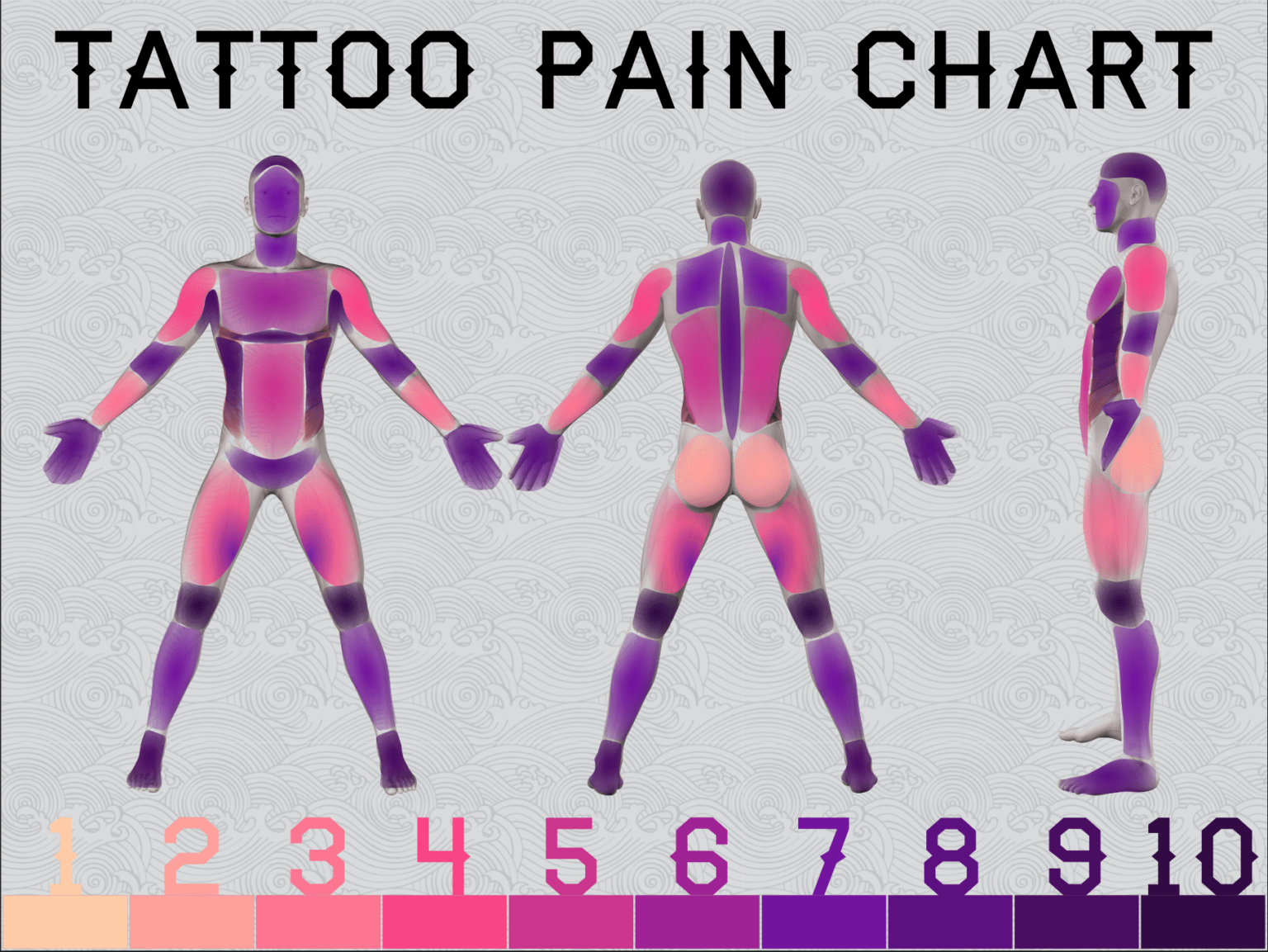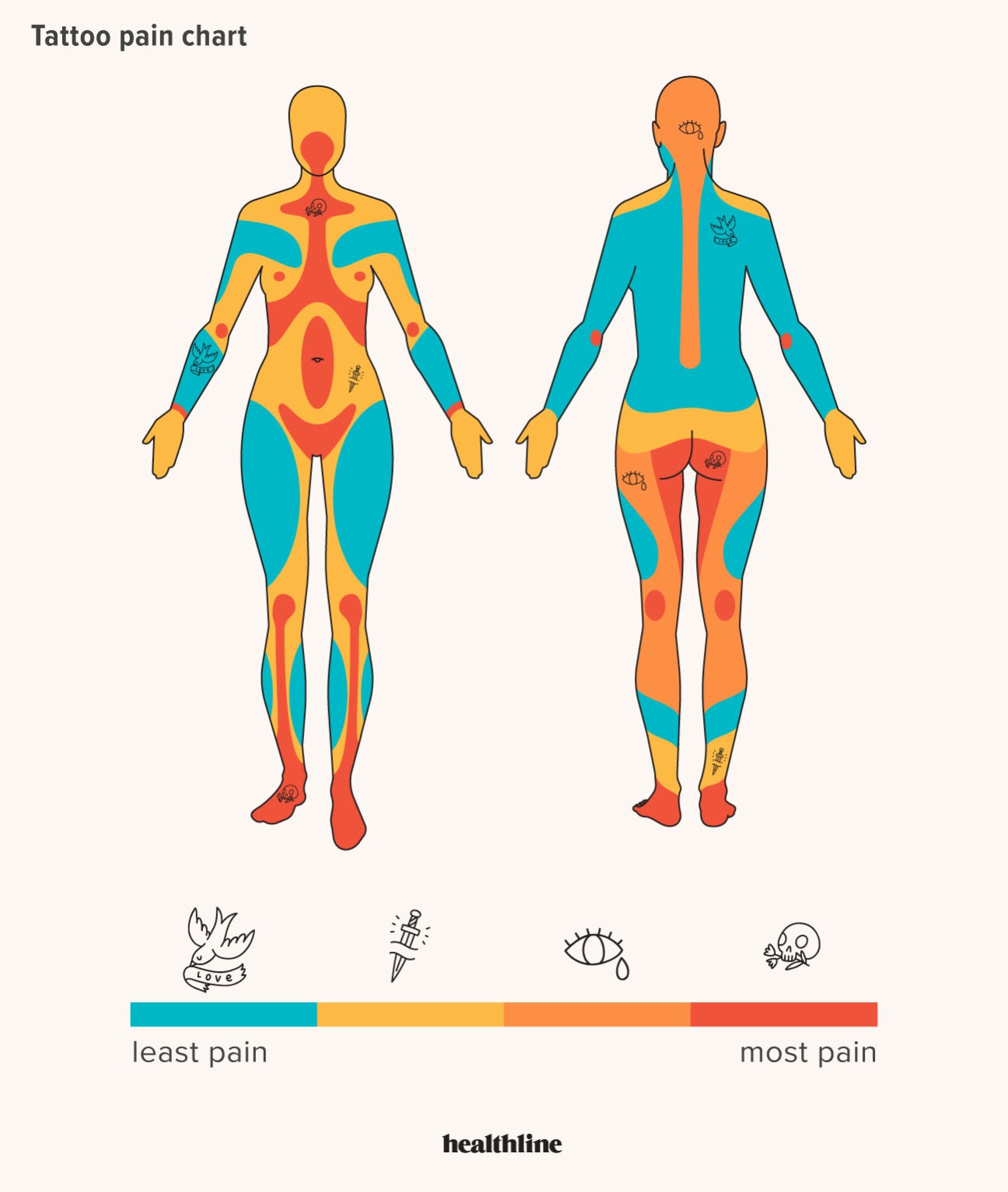Pain Is Beauty: A Comprehensive Guide to Tattoo Pain for Women
As a woman, getting a tattoo can be a daunting experience, especially when it comes to the pain factor. While some women may not mind the temporary discomfort of getting inked, others may find it unbearable. The level of pain associated with getting a tattoo can vary greatly depending on several factors, including the location, design, and individual tolerance. In this article, we will explore the world of tattoo pain, providing a comprehensive guide to help women understand what to expect and how to prepare for their tattooing experience.
The level of pain associated with getting a tattoo is a common concern for many women. While some may not experience much discomfort, others may find it excruciating. According to a study published in the Journal of Pain Research, the level of pain experienced during tattooing can be classified into four categories: mild, moderate, severe, and extreme. The study found that the level of pain experienced during tattooing is influenced by several factors, including the location of the tattoo, the design, and the individual's pain tolerance.
In this article, we will delve into the world of tattoo pain, exploring the various factors that influence the level of discomfort experienced during the tattooing process. We will also discuss the different types of pain associated with getting a tattoo, providing women with a comprehensive guide to help them prepare for their tattooing experience.
Understanding Tattoo Pain
Tattoo pain is a subjective experience, and what one woman may find excruciating, another may not. Several factors can influence the level of pain experienced during tattooing, including:
- Location: The location of the tattoo can greatly impact the level of pain experienced. Areas with more muscle and nerve endings, such as the ribcage and feet, tend to be more painful than areas with fewer nerve endings, such as the upper back and shoulders.
- Design: The design of the tattoo can also impact the level of pain experienced. Intricate designs with many small lines and details can be more painful than simpler designs with larger, bold lines.
- Individual tolerance: Each woman's pain tolerance is unique, and what one woman may find excruciating, another may not. Factors such as stress levels, mood, and overall physical health can influence an individual's pain tolerance.
The Different Types of Pain Associated with Getting a Tattoo
While pain is a common concern for many women, it's not the only factor to consider when getting a tattoo. There are several other factors to consider, including:
- Muscle tension: Muscle tension can make the tattooing process more painful. Women who are anxious or stressed may experience more muscle tension, making the process more uncomfortable.
- Nerve sensitivity: Nerve sensitivity can also impact the level of pain experienced during tattooing. Women with sensitive nerves may find the process more painful than those with less sensitive nerves.
- Sensory sensitivity: Sensory sensitivity can also impact the level of pain experienced during tattooing. Women with sensory sensitivities may find the process more uncomfortable than those with less sensitive senses.
Pain Relief Techniques
While pain is a natural part of the tattooing process, there are several techniques that can help reduce discomfort. Some of the most effective pain relief techniques include:
- Deep breathing exercises: Deep breathing exercises can help reduce stress and anxiety, making the tattooing process more comfortable.
- Massage: Massage can help relax tense muscles and reduce pain.
- Topical anesthetics: Topical anesthetics can be applied to the skin before tattooing to numb the area and reduce pain.
How to Prepare for Your Tattoo
While pain is a natural part of the tattooing process, there are several steps you can take to prepare yourself for the experience. Some of the most effective ways to prepare include:
- Research: Researching the tattooing process and understanding what to expect can help reduce anxiety and stress.
- Choose a reputable tattoo artist: Choosing a reputable tattoo artist can help ensure a safe and comfortable tattooing experience.
- Plan for aftercare: Planning for aftercare can help ensure a smooth recovery and reduce discomfort.
Top Tips for Reducing Tattoo Pain
While pain is a natural part of the tattooing process, there are several steps you can take to reduce discomfort. Some of the most effective ways to reduce pain include:
- Eat a meal: Eating a meal before getting a tattoo can help stabilize blood sugar levels and reduce hunger pangs.
- Stay hydrated: Staying hydrated can help reduce fatigue and discomfort.
- Take breaks: Taking breaks during the tattooing process can help reduce fatigue and discomfort.
Common Misconceptions About Tattoo Pain
While pain is a natural part of the tattooing process, there are several common misconceptions about tattoo pain. Some of the most common misconceptions include:
- Tattooing is always painful: While some tattoos may be painful, others may not be. Factors such as design, location, and individual tolerance can impact the level of pain experienced.
- Women are more sensitive than men: There is no evidence to suggest that women are more sensitive than men. Pain tolerance is a subjective experience that can vary greatly from person to person.
- Tattooing is only for the brave: While getting a tattoo can be a challenging experience, it's not limited to brave individuals. Women of all levels of bravery can get tattoos and enjoy the process.
Real-Life Experiences of Women Getting Tattoos
While pain is a natural part of the tattooing process, many women have shared their experiences of getting tattoos. Some of the most common experiences include:
- Anxiety and stress: Many women experience anxiety and stress during the tattooing process, but these feelings can be managed with deep breathing exercises and positive self-talk
Kaitlyn Kremsd
Eylon Levy Wife
Twitter Nsfw
Article Recommendations
- Jelly Beansrome
- Yumieto
- Jesse Plemons Breaking Bad
- Jackoherty
- Simon Cowell Funeral
- Chris Mcnally
- Mary Padian
- Jacqueline Macinnes Wood
- Does Gloria Borger Have Cancer
- Blanche Vitero


![Free Printable Tattoo Pain Charts [1-10] For Female, Men / Chest, Leg, Ear, Wrist](https://www.typecalendar.com/wp-content/uploads/2023/09/PDF-Format-Tattoo-Pain-Chart.jpg?gid=1049)
